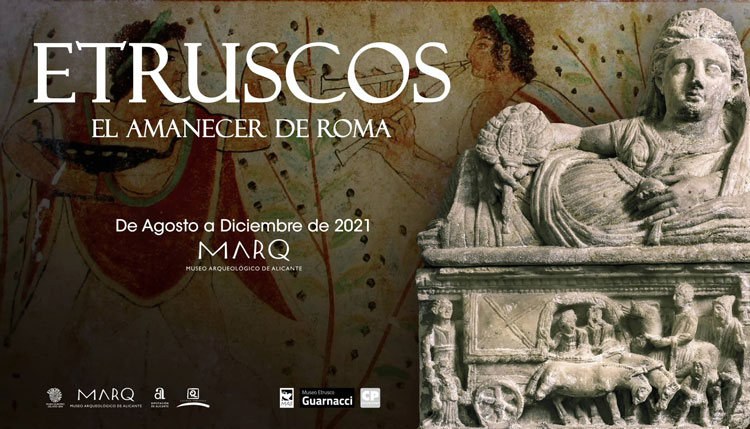The Diplomat
Last Wednesday, the Italian Embassy and the Diputación de Alicante presented at the Italian Institute of Culture the exhibition Etruscans. The dawn of Rome, an international exhibition that will show for the first time in the Archaeological Museum of the Provincial Council of Alicante (MARQ), from 26 to 12 December, a global overview of one of the great Mediterranean civilizations of antiquity.
The vice-president and deputy for Culture, Julia Parra, presided over the event, together with the Italian ambassador, Riccardo Guariglia; the director of the MARQ, Manuel Olcina; the director of the Italian Institute of Culture in Madrid, Marialuisa Pappalardo, and the curator of the project, Giuseppina Carlotta Cianferoni.
The proposal comes from the MARQ Foundation and the Soprintendenza per i Beni Archeologici della Provincia di Pisa e Livorno and will include the exhibition of 150 original pieces from the Museo Archeologico Nazionale di Firenze (MAF) and the Museo Guarnacci di Volterra, one of the oldest museums in Italy, founded in 1761. Through a museum tour of their culture, social, political and urban structure, this exhibition will show the history of this civilisation from its origins in the 9th century BC until its gradual absorption under Roman rule in the 1st century BC.
Ambassador Riccardo Guariglia confirmed his satisfaction “for holding an Italian exhibition in Alicante, because there are ties that unite the two peoples”. With this exhibition, Guariglia hopes that “the Italian-Spanish voice will be even stronger, taking it to all of Europe”. He also defended the influence of the Etruscans as a fundamental people in today’s culture of which “we are heirs and, therefore, debtors”.
The pieces on display, from 37 locations in ancient Etruria, cover the entire spectrum of the material record of this culture, the most outstanding volume being the urns, stelae and funerary reliefs with works such as the Urn of Ulysses and the Sirens from the Museum of Volterra, the canopic jar from Chiusi, a funerary stele from Florence, the urn of the Rape of Proserpina from Volterra or the male sarcophagus from the necropolis of Rosavecchia in Tuscania.
Aimed at all audiences, this great proposal will have an interesting graphic and didactic support, including audiovisual projections and interactive tools. All this, together with reconstructions and immersive settings, will transport visitors to the daily life of this village through its customs, traditions, artistic practices and religious beliefs.






